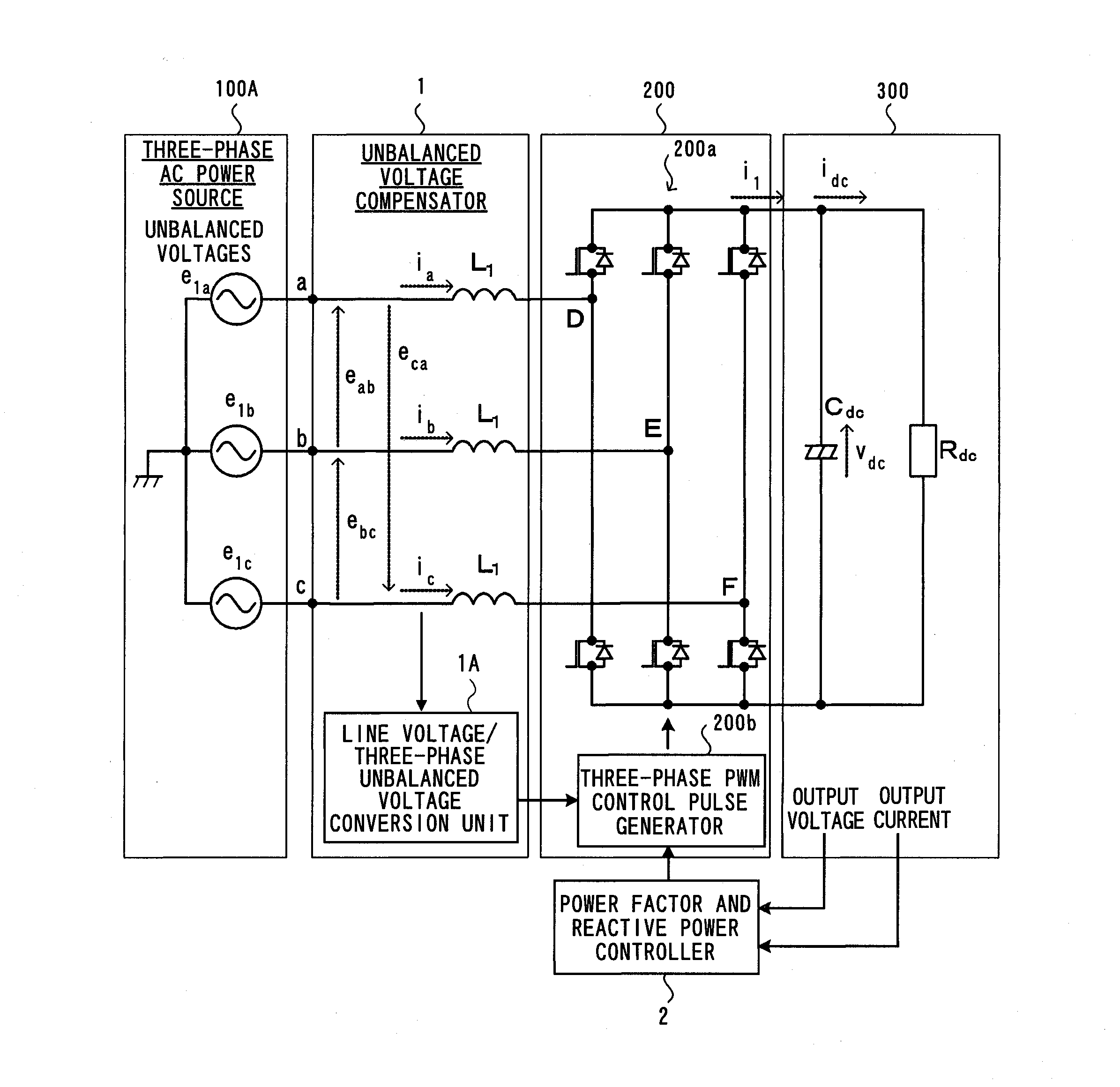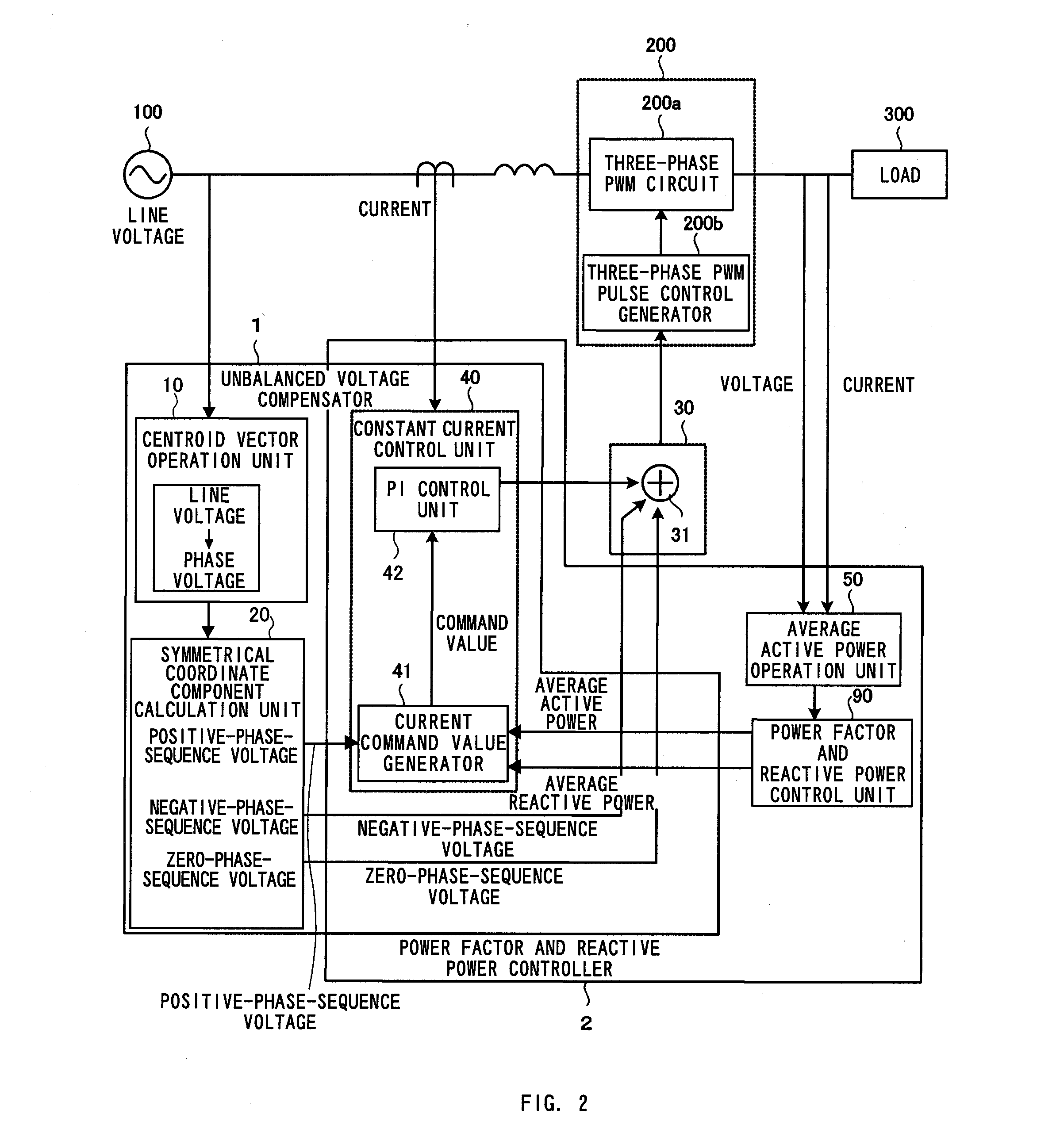Method for controlling power factor of three-phase converter, method for controlling reactive power of three-phase converter, and controller of three-phase converter
a technology of three-phase converters and controllers, applied in the direction of electric variable regulation, process and machine control, instruments, etc., can solve the problems of periodic maintenance, voltage sag in the state where the three phases are balanced or unbalanced, and the effect of unfavorable responsivity to the power factor variation
- Summary
- Abstract
- Description
- Claims
- Application Information
AI Technical Summary
Benefits of technology
Problems solved by technology
Method used
Image
Examples
Embodiment Construction
[0143]Hereinafter, preferred embodiments of the present invention will be explained in detail with reference to the accompanying drawings. With reference to FIG. 2 to FIG. 9, the power factor and reactive power control of the present invention will be explained, taking a three-phase converter as an example, and experimental results of the embodiments will be explained with reference to FIG. 10 to FIG. 15.
[0144]With reference to FIG. 2, a schematic configuration of the power factor and reactive power control of the present invention will be explained. In FIG. 2, a three-phase AC power source 100 supplies three-phase AC power, and the three-phase converter 200 subjects the three-phase AC power to the PWM conversion, and DC voltage is outputted to the DC load 300.
[0145]The three-phase converter according to the present invention is provided with the unbalanced voltage compensator 1, and the power factor and reactive power controller 2. The unbalanced voltage compensator 1 compensates f...
PUM
 Login to View More
Login to View More Abstract
Description
Claims
Application Information
 Login to View More
Login to View More - R&D
- Intellectual Property
- Life Sciences
- Materials
- Tech Scout
- Unparalleled Data Quality
- Higher Quality Content
- 60% Fewer Hallucinations
Browse by: Latest US Patents, China's latest patents, Technical Efficacy Thesaurus, Application Domain, Technology Topic, Popular Technical Reports.
© 2025 PatSnap. All rights reserved.Legal|Privacy policy|Modern Slavery Act Transparency Statement|Sitemap|About US| Contact US: help@patsnap.com



